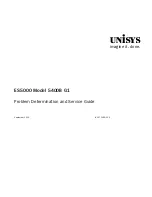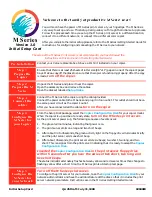
Appendix I
Remote Access (Tunneling) (continued)
I-2 Local iSeries -EIT/-C4EIT
1. An IP address should be assigned to the iServer dynamically or statically
(recommended).
2. Use a browser to access the Local iServer’s WEB page. Simply type the
iServer’s IP address at the browser’s URL location (i.e.
192.168.1.49
) followed
by an
Enter
key. You should then see the iServer’s main WEB page.
3. Click on the OK button after entering the LOGIN password.
4. Click on NETWORK page, you will be prompted with a Password (default is
00000000).
5. On the SERIAL page, under
Serial Port
section (see
Figure 4.6
or
4.7
), make
sure the parameters:
Baud Rate
,
Data Bits
,
Parity
,
Stop Bits
, and
Flow
Control
match with your attached serial device and its application software.
6. Under
Packing Techniques
section (see
Figure 4.8
), make sure to set the
End
Character (Hex)
to
00
and the
Buffering Time
to
0
.
7. Under
Multi-host
section (see
Figure I-3
), set the
Connection Type
to
Simultaneous/ Sequential
, enter the
Remote IP address
(would be the IP
address of the remote iServer, 192.168.1.50), and use the default
Remote Port
number
2000
.
Set
Retry Counter
to anything more than
0
and set the
Retry Timeout
to a
desired value.
If the tunneling connection between the two iServers goes down due to network
problems, power failure, etc., the
Sequential
connection type option will enable the
Local iServer to reconnect with the Remote iServer based on the specified time
interval in the Retry Timeout.
For example, based on a timeout of 10000 (10 seconds), the Local iServer will
continually attempt to reconnect and reestablish the tunnel with the Remote iServer
every 10 seconds.
9. Click on
Save
button for the changes to take place.
When setting the iSeries -EIT/-C4EIT as a Remote iServer, reboot the unit
for the settings to take place.
When setting the iSeries -EIT/-C4EIT as a Local iServer, only the
iSeries -C4EIT has RS485 serial connection.
10. Initialize the serial device application software to establish the connection.
58
Summary of Contents for C4EIT
Page 2: ......
















































